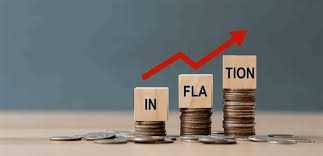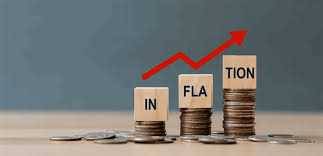In a time of stagnation and time-wasting, there are few economic indicators witnessing notable positive developments, with good news seemingly limited to the daily and mundane reports of the stability of the lira exchange rate since the second quarter of last year. However, the most significant exception indicating some improvement, albeit relatively and limitedly, has been the gradual decline in the inflation rate over the past months, according to figures from the Central Administration of Statistics. By the end of April, this indicator had reached its lowest level since 2020, indicating a slowdown in the annual increase in market prices, as noted in "Al-Modon."
**Continuous Decline in Inflation Rate**
By the end of April, the Consumer Price Index registered an annual increase of 59.67%, compared to much higher rates of 268.78% in the same period last year (2023), 222.88% in the same period of 2022, and 110.24% during the same period in 2021. In this context, the annual inflation rate reached its lowest point ever compared to the past three years, since late 2020. It should be noted that the annual increase in the Consumer Price Index in the same period of 2020 did not exceed 46.55%, but this low percentage was affected by the continued support for the import of essential goods, such as fuel, wheat, and medicines. Thus, it can be said that the current inflation rate represents the lowest percentage recorded in Lebanon since the gradual lifting of subsidies on imported essential goods, giving this development exceptional significance.
It is important to point out that this rate represents the annual increase in the prices of a basket of consumer goods in the market compared to their prices exactly one year ago. In this sense, the decrease in the inflation rate does not indicate a decrease in prices but signals a reduction in the pace of their annual increase.
Current rates of increase, while representing a noticeable improvement, remain significantly higher than the inflation rates experienced in undistressed economies. For instance, the International Monetary Fund estimates this rate to be around 7.5% in 2024 for emerging and developing markets, and 5.3% for the global economy as a whole.
For several months, the country has witnessed a gradual decline in the annual inflation rate, reaching its current low levels compared to previous years. This rate had peaked at 177.25% in late January of this year, later decreasing to 70.36% by the end of March, and finally reaching 59.67% by the end of last month. In this regard, it becomes clear that there is a continuous downward trend in inflation rates, influenced by the stability of the lira exchange rate, which has historically been the most significant factor affecting market prices, although not the only influencing factor, of course.
**Details of Price Increases**
Delving into the details from the Central Administration of Statistics reveals even more reasons for optimism concerning the rates of price increases. Prices for foodstuffs and non-alcoholic beverages had increased year-on-year—up to April—by only about 33.5%, which is significantly lower than the general price increase in the market.
Similarly, transportation costs rose by only about 9.15%, while clothing prices saw an increase of 27.2%. Thus, contrary to previous years, these sensitive goods, which quickly respond to exchange rate fluctuations, are no longer the main driver of price increases in the market.
Conversely, it has become clear that there are substantial increases in the prices of certain goods that are equally sensitive to living standards. For instance, education costs (schools and universities) recorded staggering increases of 589.23%, reflecting the adjustments made by private schools and universities in their tuition fees in recent months. Likewise, rental costs saw significant hikes of 128.16%, due to adjustments in rental contracts after their expiration. Overall, rental costs and education fees led the total increase in market prices, recording the highest rates of increase compared to other spending categories monitored monthly by the Central Administration of Statistics.
**Price Increases and Poverty Rates**
The decrease in inflation rates does not signify the end of the effects and impacts of price increases that have occurred in the market over past years, especially as these prices continue to rise today, albeit at lower rates. The primary issue currently lies in the misalignment of public and private sector wages with the price increases and the decreased purchasing power of wages in the market.
A significant indicator of this issue surfaced in the recent World Bank report, which showed that poverty rates among Lebanese people rose to about 33% by 2022, compared to only 11% a decade ago. Thus, due to the ongoing economic crisis, one in three Lebanese is now living below the poverty line, with current poverty rates being three times higher than in 2012. This inevitably necessitates a comprehensive wage correction, which has been overlooked by the political authority since the onset of the economic collapse.
In conclusion, it is important to note that the current stability in prices remains linked to the stability of the lira exchange rate, which, in turn, is related to the nature of monetary policies adopted by the Banque du Liban. These policies, which have successfully stabilized the exchange rate in the short term through measures focused on controlling the monetary mass circulating in the market, will require a set of comprehensive reforms to achieve this monetary stability in the long term. This emphasizes the need for a return to an integrated financial recovery plan rather than merely relying on ad hoc and limited-scope interventions being implemented today, as noted by "Al-Modon."




